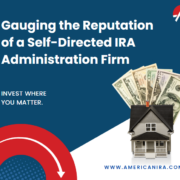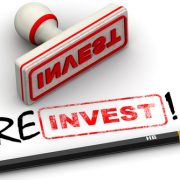Case Study: A Self-Directed IRA Works
Business Insider profiles a man who shows us that over time, consistent contributions to retirement accounts help to build wealth. It’s a lesson that perhaps applies even more to Self-Directed IRA owners. Some Self-Directed IRA owners do not get a daily report card in the newspaper that tells them how their investments are doing, thanks to the stock market reports. Investors in real estate, LLCs, partnerships and other illiquid or closely held, non-public investments have to trust in the market and the long-term appreciation of their assets for success.
But it was time, patience and sacrifice that made it possible for J. Farmer, the blogger behind BudgetsAreSexy.com. Since he and his wife began investing seriously during the 2008 financial crisis, he has amassed a net worth of nearly a $1 million. And this was largely by maximizing his contributions to his IRAs.
Now, Farmer got lucky in a few ways:
- He did not lose his livelihood during the financial crisis, like a lot of people did.
- He began investing when both stocks and real estate were selling ridiculously cheaply, compared to long-term earnings and dividends.
- He had an employer that matched a stupendous 100 percent of his 401(k) contributions.
These are things that are beyond anyone’s power to reliably replicate on their own (though you can provide yourself a 100% match if you own your own corporation or LLC and you set up a Solo 401(k) plan.
In fact, a lot of business owners do just that. The catch: You have to offer the same sweet matching deal to your employees, if you have them. But if you have no employees, other than your spouse…
But the nuclear engine that made Farmer’s terrific success possible was not any of these things. It was personal discipline and the power of savings.
How It’s Done
Farmer spells it out at his blog.
First, and most importantly, Farmer married well. His wife is as frugal as he is, and they were motivated to build lasting wealth together. So, she scrimped and saved – and later returned to the work force to generate more income.
But she was not swinging a huge income bat. Farmer estimates her income contribution to be about $20,000 per year. But for people who are disciplined with money, even less than $2,000 per month of extra income is enough to make a big difference in their ability to build wealth over time.
Second, he’s been maxing out all available retirement contributions for ten years.
And that’s not an insignificant sum of money. He’s self-employed, and the bulk of his contributions go into a SEP IRA – a popular small business retirement plan. He can contribute up to $56,000 per year into the plan, or 25% of income, whichever is less.
His spouse also contributes to a federal Thrift Savings Plan, and both he and his wife have Roth IRAs, on top of the SEP.
The Roth IRA contributions are made with after-tax dollars. But the big contributions to the TSP and the SEP help keep their adjusted gross income down, so even the tax hit on the money getting contributed to the Roth is manageable.
Sure, a rising market helps. The stock market is still hitting record highs. But you cannot benefit from it if you are not investing, and those who invested as much as they possibly could over time have benefited a lot.
Outlook
Today’s bull market in both stocks and real estate appears quite mature. It’s unlikely for either asset class to continue to generate the same investment returns as they did for the last 10-11 years, going back to the financial crisis and the Great Recession.
But that does not mean it’s a good idea to stop investing. It just changes what you might want to invest in.
For example, you can continue to max out your available retirement contributions. But you may want to pull back on aggressive investments like tech stocks and concentrate on income-producing investments that can cushion the blow of a price decline, like rental property, reliable dividend-paying companies, LLCs and limited partnerships. You can also potentially get above-market returns on private lending, mortgages or tax liens and certificates, while diversifying your portfolio in ways appropriate to a mature expansion.
You cannot replicate the market conditions that helped Farmer and his family along the way. But you certainly can replicate the strategy, the patience, and the willingness to sacrifice now to build up long-term wealth for the future.
Except for the TSP, all of Farmer’s account types mentioned support self-directed investing: Even the SEP IRA. So, you can diversify your investments all across the board.
Interested in learning more about Self-Directed IRAs? Contact American IRA, LLC at 866-7500-IRA (472) for a free consultation. Download our free guides or visit us online at www.AmericanIRA.com.





